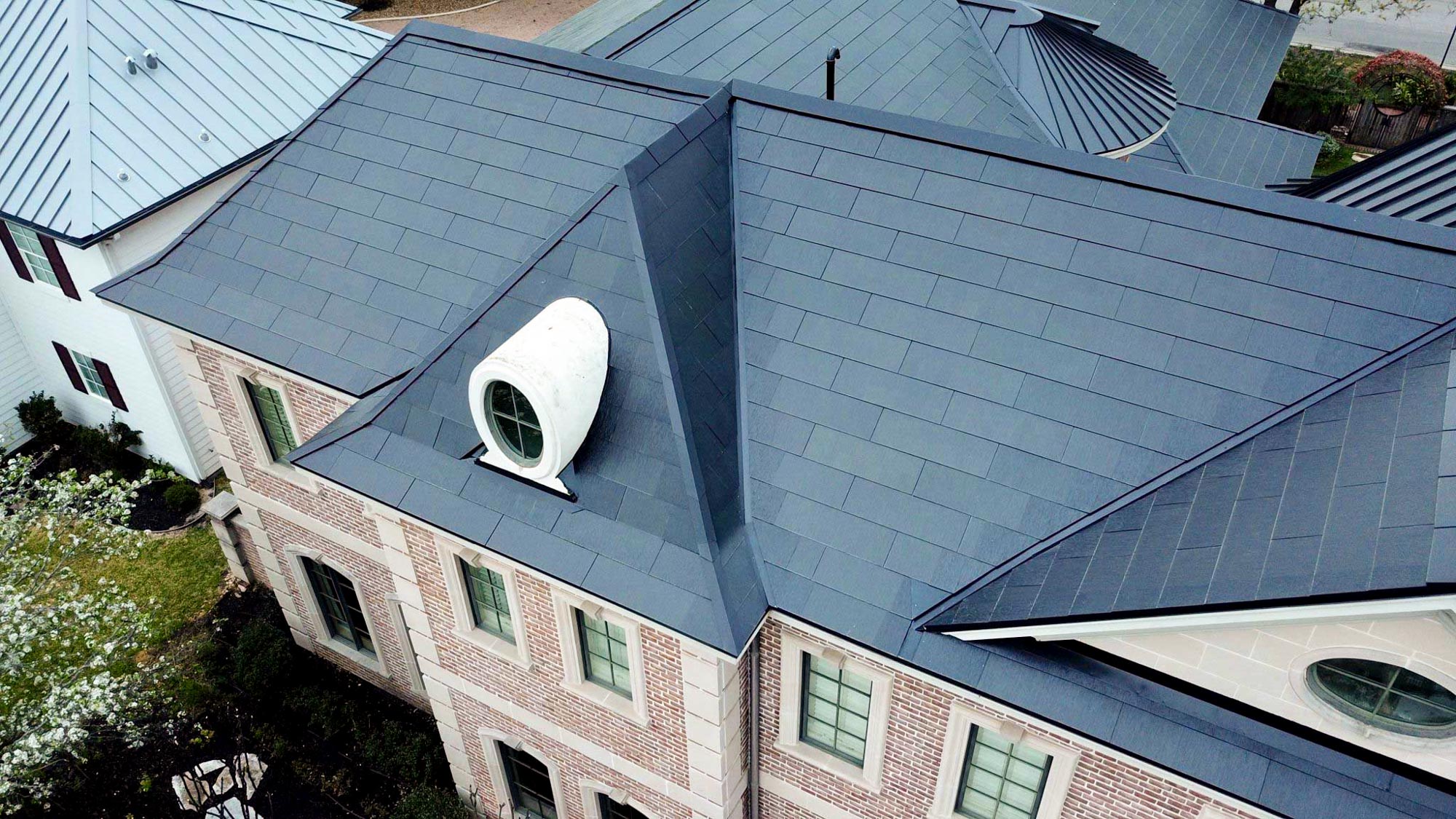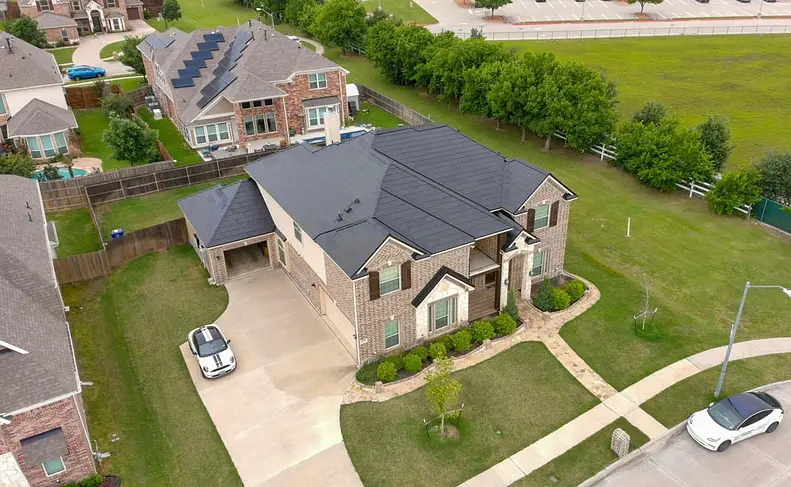Discover the dual advantage of solar roofs

By Good Faith Energy.
Maximize solar power with Tesla solar roofs.
Not only do solar roofs provide energy but they can also reduce heat on sweltering days. The energy can be forwarded to run an AC unit and the solar panels themselves absorb the heat. This could be a worthwhile investment for those who live in hot climates. Solar roofs will lower the temperature and reduce cooling costs. They fit right in with other shingle types and provide significant benefits.
Tesla solar roofs explained: Cooling your home while generating power
In today’s world, energy efficiency is more than just a buzzword — it’s a necessity. As homeowners look for ways to reduce their environmental footprint and save on energy costs, solar roofs have gained popularity. But beyond generating electricity, many wonder: Does a solar roof actually reduce heat? Let’s delve deeper into how solar roofs work, their impact on home temperatures and what benefits they bring to your living space.
How Tesla solar roofs work
To understand the heat-reducing benefits of a solar roof, it’s essential to first grasp how these systems operate. A solar roof, or solar photovoltaic (PV) system, consists of panels made up of solar cells. These cells capture sunlight and convert it into direct current (DC) electricity, which is then transformed into alternating current (AC) electricity for home use.
However, the process of converting sunlight into electricity isn’t 100% efficient. A portion of the sunlight that strikes the panels is absorbed and converted into electricity, while some of it is reflected away and another portion is converted into heat. The key factor here is that by absorbing sunlight, solar panels reduce the amount of heat that would otherwise be absorbed by your roof.

Solar panels as a cooling shield
Think of solar panels as a shield on top of your roof. Without solar panels, your roof absorbs a significant amount of solar radiation, which heats the roof material and transfers that heat into your home. This is particularly true for darker roofing materials that tend to absorb more sunlight.
When solar panels are installed, they act as a barrier between the sun and your roof. The panels absorb a substantial portion of the sunlight, converting it into energy instead of heat. Studies have shown that the presence of solar panels can reduce roof temperatures by as much as 35°F (about 20°C) during peak sunlight hours. This reduction can have a significant impact on the temperature inside your home, especially in hotter climates.
The role of airflow
Another factor contributing to the cooling effect of solar roofs is the airflow between the panels and the roof surface. Most solar panel installations involve mounting the panels slightly above the roof, creating a small gap. This gap allows air to circulate, further dissipating heat. The airflow prevents the heat from trapping against the roof and helps to keep both the roof and the panels cooler.
This ventilation effect can be particularly beneficial in regions that experience high temperatures. It not only cools the roof but also helps to improve the efficiency of the solar panels themselves, as they tend to operate more efficiently at lower temperatures.
The impact on indoor temperatures
So, how does this cooling effect translate to the inside of your home? The answer lies in the reduced heat transfer from the roof to your living spaces. With a cooler roof, less heat makes its way into your home, resulting in lower indoor temperatures. This can reduce the reliance on air conditioning systems, leading to lower energy consumption and reduced utility bills.
It’s important to note that while solar roofs can help reduce indoor temperatures, they are not a replacement for proper insulation and ventilation. Homes with well-insulated attics and proper ventilation systems will see the most significant benefits from solar roofs in terms of reduced indoor heat.
Solar roofs and the urban heat island effect
The heat-reducing benefits of solar roofs extend beyond individual homes. In urban areas, buildings and roads absorb and retain heat and create what is known as the “urban heat island” effect. Solar roofs can play a role in mitigating this phenomenon. By reducing the amount of heat absorbed by roofs across a city, solar panels can help to lower overall urban temperatures.
Moreover, widespread adoption of solar roofs in urban areas can contribute to improved air quality and reduced energy demand during peak hours, further enhancing the environmental benefits of these systems.
Additional benefits of solar roofs
Beyond their ability to reduce heat, solar roofs offer a range of other benefits:
Durability: Solar panels protect your roof from weather elements, potentially extending its lifespan by shielding it from direct exposure to the sun, rain and hail.
Energy savings: Solar panels generate electricity that can be used to power your home, reducing your reliance on the grid and lowering your energy bills.
Environmental impact: By using renewable energy, you decrease your carbon footprint and contribute to the fight against climate change.
Increased property value: Homes with solar roofs are often more attractive to buyers, as they offer long-term energy savings and environmental benefits.

Considerations before installing a solar roof
While the benefits of a solar roof are numerous, it’s essential to consider a few factors before making the investment:
Roof condition: Ensure your roof is in good condition before installation, as solar panels can last 25-30 years and you don’t want to replace your roof midway through.
Orientation and shading: The efficiency of your solar panels depends on their exposure to sunlight. Roofs with southern exposure and minimal shading are ideal.
Local climate: Solar panels are effective in most climates, but their performance can vary. In cooler regions, the cooling benefits may be less pronounced, though energy savings can still be significant.
Cost: The initial cost of a solar roof can be substantial, though incentives, tax credits and financing options are available to help offset this investment.
Finding the right installers: Make sure that you find a specialized Certified Tesla Solar Roof installer, like Good Faith Energy.
Conclusion
In summary, a solar roof can indeed reduce heat, offering both direct and indirect cooling benefits to your home. By absorbing sunlight that would otherwise heat your roof, solar panels act as a shield, lowering roof and indoor temperatures. This reduction in heat can lead to energy savings, improved comfort and a positive environmental impact. However, to maximize these benefits, it’s important to consider factors such as roof condition, panel orientation and local climate before installation.
As solar technology continues to evolve, the future of energy-efficient homes looks bright, with solar roofs playing a pivotal role in creating cooler, more sustainable living environments.
Original image and article source: Good Faith Energy
Have a question? AskARoofer.
Find your local roofing contractor in the RoofersCoffeeShop® Contractor Directory.










Comments
Leave a Reply
Have an account? Login to leave a comment!
Sign In